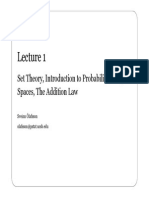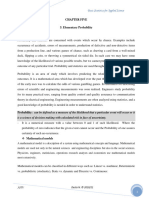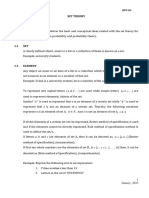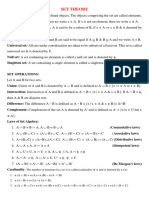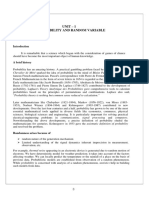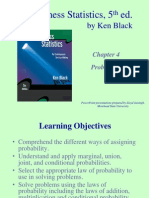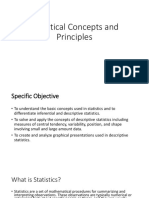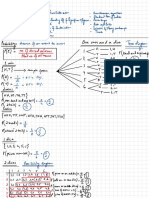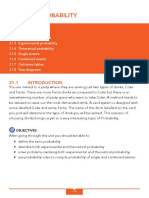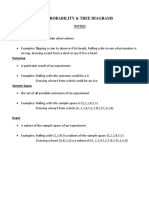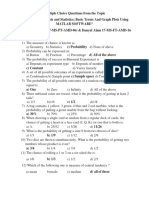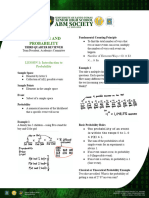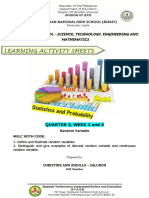0% found this document useful (0 votes)
28 views11 pagesLecture-7 Basic Probability Lecture
This document provides an introduction to probability and statistics, focusing on set theory, types of sets, operations on sets, and basic concepts of probability. It defines key terms such as sample space, events, and types of events, along with examples to illustrate these concepts. Additionally, it includes information about playing cards and the classical definition of probability.
Uploaded by
ahmarali2004Copyright
© © All Rights Reserved
We take content rights seriously. If you suspect this is your content, claim it here.
Available Formats
Download as PDF, TXT or read online on Scribd
0% found this document useful (0 votes)
28 views11 pagesLecture-7 Basic Probability Lecture
This document provides an introduction to probability and statistics, focusing on set theory, types of sets, operations on sets, and basic concepts of probability. It defines key terms such as sample space, events, and types of events, along with examples to illustrate these concepts. Additionally, it includes information about playing cards and the classical definition of probability.
Uploaded by
ahmarali2004Copyright
© © All Rights Reserved
We take content rights seriously. If you suspect this is your content, claim it here.
Available Formats
Download as PDF, TXT or read online on Scribd
/ 11








